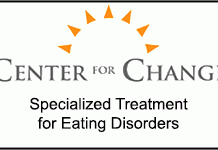Marijuana is a very popular drug with young people. However, that doesn’t mean that all teens are using marijuana, despite the increasing ease of access due to legalization and normalization. Marijuana — often known as ‘weed,’ ‘pot,’ or ‘grass,’ among other nicknames — is a product of the hemp plant, Cannabis sativa. The main active chemical in marijuana is THC (delta-9-tetrahydrocannabinol), which of the roughly 400 chemicals found in the cannabis plant affects the brain the most.
A green or gray mixture of dried, shredded flowers and leaves of the hemp plant (Cannabis sativa), marijuana also comes in the form of oil and wax extracts and in a wide array of food products. Loose marijuana can be rolled into a cigarette called a “joint,” smoked in a pipe or water pipe (called a “bong”) or vaporized using a “vape” pen.
Marijuana 101 for parents
With all the changes currently underway in the availability and regulation of marijuana use, beliefs in the relative harmlessness of the drug are likely to overshadow acknowledgement of its known risks, including addiction. Marijuana affects the brain’s reward system in the same way that all other addictive drugs do – and the likelihood of addiction increases considerably for those who start young.
People who use marijuana may experience a pleasant euphoria and sense of relaxation, or heightened sensory perception, an altered perception of time, and increased appetite. But negative short-term effects of marijuana include disrupted learning and memory, difficulty with thinking and problem solving, distorted perception (sights, sounds, time, touch), loss of motor coordination, increased heart rate, and anxiety. These effects are even greater when a person combines marijuana with other drugs (including alcohol).
Marijuana increases the risk of chronic cough and bronchitis, and increases the risk of schizophrenia in vulnerable individuals. It may increase the risk of anxiety, depression and a series of attitude and personality changes known as “amotivational syndrome.” This syndrome is characterized by a diminished ability to carry out long-term plans, a sense of apathy, decreased attention to appearance and behavior, and decreased ability to concentrate for long periods of time. These changes can also include poor performance in school.
Researchers have shown the many ways in which marijuana affects the brain, and how those who use marijuana regularly, particularly young people, are at higher risk of mental health problems. In fact, it’s widely accepted that the damage from adolescent marijuana use can have profound and long-lasting effects on a young person’s developing brain.
It has yet to be proven that cortical thinning is directly related to schizophrenia or other forms of psychosis. Nonetheless, for individuals at high risk of schizophrenia, or who already are diagnosed with it, marijuana use clearly makes symptoms worse. One study showed that for individuals with or at risk of schizophrenia — whose brain functioning is already impaired — marijuana’s damage is, in effect, compounding the problem.
Preventing & Addressing Teen Marijuana Use
During the teen and young adult years, your child is especially susceptible to the negative effects of any drug use, including marijuana. Evidence has shown that starting marijuana use during the teen years and using it frequently into young adulthood is associated with a lowered IQ and interference with other aspects of functioning and well-being. Even the occasional use of pot can cause teens to engage in risky behavior, find themselves in vulnerable situations and make bad choices while under the influence.
The best approach to help prevent your child from using marijuana, or to address their using, is to talk to your child about marijuana, and share your concerns.
Original Post: https://drugfree.org/drugs/marijuana/#













